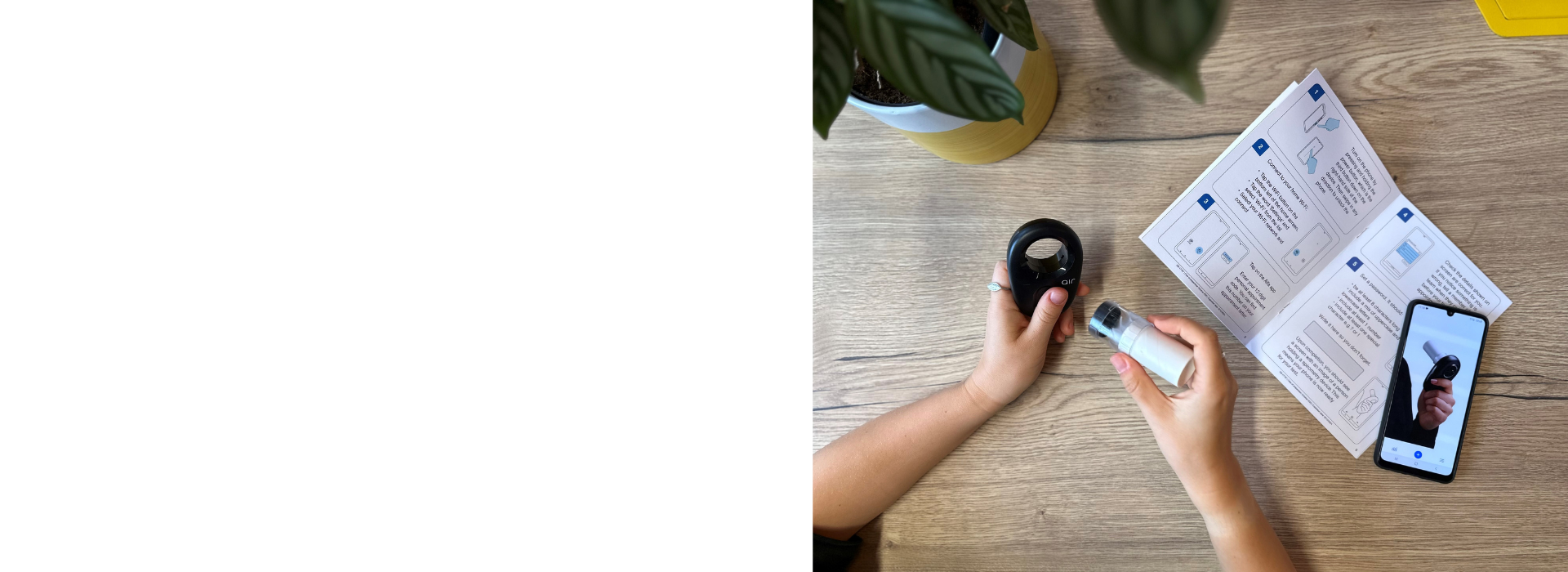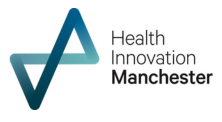The opportunity
Respiratory disease affects one in five people in England and is the third biggest cause of death, yet waiting times to access diagnostic tests, particularly in the most deprived areas, are increasingly long. AstraZeneca and their partner Health Innovation Manchester saw an opportunity to explore whether new home testing technology could provide accurate and timely support to diagnose COPD or asthma.
The result
We designed, built, and tested a prototype for a brand-new remote spirometry screening service called Aspire, gaining a comprehensive understanding of the experiences of both patients and healthcare professionals navigating the end-to-end service. The insights gathered from this phase identified several opportunities to develop the prototype service so that it could be scaled up to serve 1,000 patients in Phase 2.
This Project has been developed as part of a Joint Working initiative between
Health Innovation Manchester and AstraZeneca UK.
Context of project
Respiratory disease affects one in five people in England and, after cancer and heart disease, is the third biggest cause of death. There is a strong link between an area’s level of affluence and the number of people with asthma and COPD (Chronic Obstructive Pulmonary Disorder), with higher prevalence in areas of higher deprivation. This is made worse as the most deprived areas tend to have lower levels of access to lung-function testing. Getting the right test at the right time can aid a quick diagnosis and enable early access to the right care, which is key for long-term outcomes.
Spirometry is a test used to help diagnose respiratory conditions, but, during COVID-19, this form of testing was completely stopped. Pressures on GP practices, discomfort around the test itself (exhaling high volumes of breath in a confined surgery room), and inconsistent funding of spirometry have all contributed to increasingly long waiting times for a lung-function test. If patients can access a spirometry test in a clinical setting, the in person test itself can be stressful, increases costs for both the patient and the healthcare provider, and the travel to a hospital can exacerbate patients’ conditions.
The problem to be solved
Improving patient outcomes
Working in partnership with AstraZeneca and Health Innovation Manchester, we produced and tested a prototype service that allows spirometry testing to take place in a remote setting, outside of a hospital or clinic, to increase the opportunities for people, particularly those in deprived communities, to have their lung function tested. The aim of this project is to widen access to spirometry screening, to achieve more and earlier diagnoses, and to improve outcomes for those suffering from potentially life-limiting illnesses.
“Seeking external expertise at Health Innovation Manchester has provided great additional value to this programme. The perspectives that were offered from the service users ensured a complete co-designed approach, resulting in a service that is fit for purpose and one that we know will improve the health and wellbeing of people living with respiratory conditions.”
– Dr Paula Bennett, Chief Nurse, Health Innovation Manchester
What we did and how we did it
A hypothesis-driven approach
Rather than starting with a long piece of discovery research, AstraZeneca wanted this work to be hypothesis driven. They had the idea that carrying out spirometry tests remotely would increase their availability to a wider population and wanted to understand if such a service could be effective. Running the service on a small scale was the most effective way to test the logistics, experience, and viability of this new approach to respiratory screening.
As this was AstraZeneca’s first attempt at building and piloting a screening service from scratch, we worked with them from the beginning to agree the aims and shape of the service. Adopting a service design and systems view was essential to ensure a holistic and effective approach. This allowed us to consider every aspect of the patient journey, the roles of all parties involved in delivering the service, and the interaction between various service components.
Working with stakeholders we developed a plan for a pilot that aimed to recruit approximately 50 patients in Manchester. We would test a new remote way of doing the test alongside doing spirometry in-hospital, so we could compare patients experiences and Health Innovation Manchester could compare the results.
A whole service design
We developed the whole support infrastructure for the service, from appointment letters and kit instructions for patients, to training for the health care professionals involved, to safeguarding and troubleshooting guides to protect all users’ wellbeing. Throughout the user journey, each touchpoint was created with or tested by the people who would use it and improved upon as we learned more.
Placing the user at the centre
Working in partnership with AstraZeneca on this hypothesis-driven process allowed us to approach the work with a real focus on user-centred design principles as we developed the service in conjunction with real service users. To understand what worked and what didn’t in the prototype service, we tied observations and interviews in a manner that was novel to our client. With the effectiveness of the spirometry test as our central focus, we:
- Observed patients carrying out their test at home and in a clinical setting
- Observed physiologists facilitating tests remotely in patients’ homes and in a
clinical setting
In each instance, the observation collected data around how the test was performed, the responses and behaviours of both participants. In these observations we were able to identify pain points and obstacles on both sides of the test to enable refinements to the service, but also to see where the service was working well.
Following the observations, we carried out in-depth interviews with the service users to further explore their experience of the service. Observing the two ways of delivering the service, and then interviewing both patient and physiologist, enabled us to compare the remote and in-hospital user experience and learn more about what worked better and for whom.
“The outcomes this service will deliver for patients and carers in Greater Manchester are truly significant. Your ability to collaborate with the Greater Manchester health and care system to produce these insights demonstrates exceptional character. It has been inspiring to hear outputs of the collaborations between service users and staff. The results speak for themselves.”
– Jason Kalugarama, Senior Programme Development Manager – Innovation and Commercial, Health Innovation Manchester
An inclusive design
Designing an accessible and inclusive service was crucial for Aspire to widen access to spirometry and ensure its adoption by the NHS. We prioritised inclusive design at every step, enhancing accessibility in interactions and the overall service flow.
Involving our accessibility and user experience experts, we audited the appointment app and conducted an inclusion workshop with participants who had various disabilities to feedback on the service. These insights, including best practice from service standards across public services, inclusive design, accessibility standards, and research on diagnostic services, were distilled into actionable principle cards, providing clear examples and guidelines for designing inclusive diagnostic tools for the future.
The results that were achieved
A continuing partnership
The work we completed allowed us to identify the needs and preferences of users taking part in a remote spirometry service, the pain points and opportunities associated with the service, and how best to streamline processes to maximise the experience for both patients and healthcare professionals.
“I just wanted to say well done and thank you for the great work you’ve done in
getting us to this stage in the project. The work that you have completed will be
extremely valuable, in terms of how we navigate the steps to bring the project to life.”
– Jenny Russell, Regional Healthcare Manager – Respiratory & Immunology, AstraZeneca
Our engagement also provided valuable insights into the differences between an in-home service and the current hospital spirometry service, identifying the user groups who would most benefit from a remote screening service. The repeated service iterations implemented within Phase 1 created a dynamic product developed within a design environment that welcomed challenge and change.
We are excited to continue building on our iterative approach and insights to develop the next phase of the service, a prototype for 1000 patients, with AstraZeneca and their partners.
“Projects with high uncertainty can be at times challenging but you all broke through barriers and really dug into the problem space. A massive thank you for the brilliant work that was accomplished and it has really set us up to make things happen. I’m very much looking forward to using this as a great case study on how service design can derisk projects, develop solutions that people want to use and pave a path that can be delivered.”
– Shirley Sarker, Design Director – Diagnostics & Innovative Recruitment, AstraZeneca
GB 63589
Date of preparation March 2025




